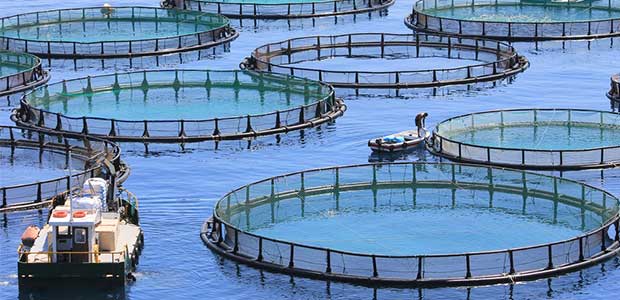
Here's How the Seafood Industry Is Cracking Down on Sustainability
The seafood industry relies on one of the world's biggest and most important ecosystems: the ocean. Here are ways the fishing industry is being pressed to operate more sustainably.
- By Jenna Tsui
- Jul 21, 2020
The seafood industry is global, and since it survives off the oceans and ecosystems sustain its produce, sustainability plays a big role. Across continents, seafood can power economies — local and nationwide. That impact, however, comes with many unsustainable practices and effects. To fully support global economies, consumer demands and environmental needs, the industry commit to sustainability.
The Impact of Fisheries
Sustainable seafood requires a healthy relationship with the oceans and animals that live in them. The fishing industry, though, often uses harmful practices when harvesting sea life. According to a study by the Food and Agriculture Organization of the United Nations (FAO), 34.2 percent of global fisheries are operating on unsustainable levels—and this number is increasing.
Primarily, overfishing occurs when workers remove excess amounts of sea life—intentionally or accidentally. For instance, fishers may gather sea bass in large sums. If they gather too many, it throws off the balance of the surrounding environment and ecosystems.
Worse, sometimes endangered or protected species accidentally come into the mix. This kind of overfishing can lead to the extinction of certain fish species if it occurs too frequently. Ultimately, it can throw off the food chain. A more precise and deliberate fishery will account for locations, endangered species and vulnerable ecosystems.
While fishing, industry workers must also focus on solutions for waste output, energy and emissions. Researchers found that LED lighting on nets helped reduce the amount of eulachon bycatch, reducing overfishing excess.
LED’s are used at the foot of ropes and nets due to its low-voltage operation; the light helps attract microscopic organisms which fish feed on. Because of this, 100 percent of fishing vessels adopted the use of LED in 2018.
In terms of pollution, fishing vessels released 207 million tons of CO2 emissions in 2016. Ultimately, shifting energy and fossil fuel consumption to more sustainable practices, like electric power, will change the industry to be more environmentally friendly.
The Pressure for Industry Sustainability
The seafood business is massive. In 2016, the industry drew in $212 billion for the United States alone. This momentum is not slowing down either. With this widespread dependency comes some hesitation and questions, though.
There has been a recent lack of trust building between consumers and the seafood industry. People want to know where their seafood comes from, how the fishers get it and how their restaurant or supermarket processes it. These demands come from curiosity around the industry—how far is the consumers' food traveling, and is it produced sustainably?
Often, restaurants do not have answers for consumers. They are unsure where the imports are coming from or what sustainable measures experts have used to source them. However, in a helpful turn of events, technology is demystifying some of the vagueness.
An app and website from the Monterey Bay Aquarium, Seafood Watch, recommends what to look for and what to avoid when consumers are eating or shopping for seafood. It shows which local businesses serve and sell sustainable seafood.
An app like this then puts pressure on the seafood industry as a whole to make some sustainable changes.
The Big Change
There is one primary solution that facilitates sustainable fishing and decreases the fishing industry's harmful environmental effects. Additionally, it can provide further clarity for consumers about the fishing process. Aquaculture is the growing industry trend for sustainable practices.
Aquaculture, or aquafarming, is the process of harvesting different types of fish in controlled environments. In both saltwater and freshwater, experts contain fish in safe, clean settings. Some aquaculturists breed fish so that overfishing is no longer a threat.
This process also allows for better monitoring of population control. If there are endangered fish in the containment, workers can put them back into the ocean safely.
Further, aquaculture could greatly reduce industry emissions since workers will not be traveling as far on boats, which therefore uses less energy. Ultimately, the seafood industry becomes more sustainable and can connect better with consumers through these measures.
A Sustainable Fishing Future
As more fishing businesses switch to sustainable practices, you will notice a healthier connection between the industry, the consumer and the economy. With an environmentally friendly business, the multi-billion-dollar economy of seafood can be sustainable.
About the Author
Jenna Tsui is a Texan journalist who co-owns The Byte Beat blog. She writes about the latest news in sustainability, culture, technology and more. Check out her work on TBB or follow her on Twitter @jenna_tsui .